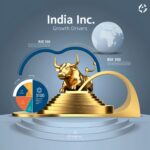In the realm of investment, a focused approach often leads to victory. This principle holds true in various aspects of life – a fact illustrated by my personal experience with golf. Although I occasionally managed impressive shots, my inability to maintain consistent focus across every swing and hole led me to step away from the sport.
As a keen observer of the investment landscape, I’ve come to realize that few investors can maintain unwavering focus across all dimensions of the game. In this article, we will explore three pivotal aspects that demand intense concentration for investment triumph: recency, avoiding mistakes, and anticipation.
Embracing the Power of Recency
The majority of individuals, including professionals, devote substantial time to daily headlines and media coverage. Unfortunately, this often leads to hasty investment decisions influenced by the latest news. This tendency is understandable, as many traders perceive a security’s value as being aligned with its current price. They then factor in the perceived impact of recent developments, be it economic, political, corporate, or even sporting events.
While some individuals possess the skill of a seasoned trader, a significant number follow the market trends without critical analysis. This inclination to go with the crowd can prove detrimental, as markets typically have already factored in the “new” information. Additionally, heightened volatility rates often result in quick reversals of recent trades. Following market trends also widens bid-ask spreads and increases commission costs when exiting a trade.
Although our fund data does not directly quantify these costs, transaction turnover rate data is available for mutual funds and professional funds. As mentioned earlier, individuals who consistently manage funds with adept trading skills are rare. In my assessment, funds with high turnover rates are generally less favorable, assuming other factors are relatively equal. To determine high turnover, one should compare a fund’s turnover against a broader sample of peers, considering the unique nature of each market segment and security type.
In our framework of time-span-oriented portfolios, the Operational Portfolio (1–2 years) and the Replenishment Portfolio (2–5 years) are suited for monitoring current prices and short-term trends, allowing for relatively higher turnover fund selections. Conversely, the Endowment Portfolio (5–15 years) and Legacy Portfolio (beyond 15 years to multi-generations) benefit from a different approach.
Recently, I advocated for increasing a long-term portfolio’s energy allocation from 7% to 10%. Given the upward momentum of energy-related stocks driven by rising oil prices, this adjustment makes sense. While a shorter-term portfolio might prompt consideration of capitalizing on the upswing, a long-term approach necessitates patience. In my case, despite a potential 20% loss tolerance, I would retain these cyclical positions for years to come.
The Imperative of Error Avoidance
In the realm of investments, avoiding mistakes mirrors medicine’s Hippocratic Oath – a commitment to do no harm. This philosophy has spawned the concept of indexing or, at a slightly higher cost, closet indexing.
Adapting the Prudent Man Rule, first introduced in an 1830 case that Harvard College lost, implies mimicking prevailing strategies to evade criticism and penalties. This approach hinges on the assumption that the crowd’s consensus, as reflected in securities indices, is correct.
However, wisdom now rests on the shoulders of securities index publishers, who must make prudent selections using precise mathematical formulas and regular updates. While I succeeded in building a business that compared funds based on Judge Samuel Putnam’s rule, I find resonance in an earlier principle expressed 41 years prior. In a letter to a French scientist in 1789, Benjamin Franklin wrote, “Nothing can be said to be certain, except death and taxes.”
Consequently, I hesitate to confine my clients to a mechanistic formula. Why? To gain perspective, let’s delve into a pivotal change in the investment landscape over the past four decades. On May 1, 1975, the final phase of the SEC-mandated elimination of fixed brokerage commissions took effect. Understanding the backdrop of this regulation is essential to grasp how it produced unintended outcomes, reshaping global stock markets.
The primary rationale behind introducing brokerage commission competition (despite existing service and capital competition) was to lower costs for retail investors. Traditional financial institutions sought to curtail brokerage firms’ profits by attracting their top investment talent with higher compensation. While the evolution of this shift is intricate, it’s crucial to note that, aside from retirement accounts, very little retail listed equity agency business occurs today.
Brokerage firms’ wealth and asset management divisions, along with the proliferation of hedge and private equity funds, have displaced traditional institutions in the market. Leveraging technology, exchange-traded funds (ETFs), and borrowed capital, these new players heightened market volatility and share price competition, coinciding with increased investment costs for retail investors. In the next significant market downturn, comprehensive market indices are likely to experience an outcome akin to large wartime bulk shipping when faced with faster, more precise torpedoes.
Anticipating Change for Investment Triumph
The ability to anticipate changes that others overlook is a distinctive advantage.
Throughout history, instances like Robert E. Lee discovering a concealed path in the Mexican-American War have highlighted the value of uncovering hidden opportunities. In contemporary times, visionaries like Steve Jobs consistently apply this practice. While predicting the future remains an uncertain endeavor, focusing on potential change elements and identifying their implications is akin to finding that concealed path.
This capacity for anticipation holds significant importance in the Legacy Portfolio, generating income streams spanning generations for institutions, families, and even myself. To reap these benefits, patience is essential. However, I am acutely aware that many perceive little distinction between acting prematurely and making an incorrect decision. This understanding is why the creation of exceptional artistic masterpieces requires substantial time.
Question of Reflection: How much of your risk capital are you willing to invest in anticipation of change? (Feel free to share privately.)











